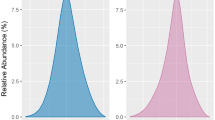Abstract
Patients treated with a vitamin K antagonist may require interruption of their anticoagulation prior to an invasive procedure or surgery, and as a result, may be placed at a higher risk for thromboembolic events during this time. Either low-molecular-weight heparin (LMWH) or unfractionated heparin is frequently used to bridge the gap in anticoagulation treatment because of their relatively rapid onset and offset of action compared to warfarin. Despite the lack of randomized trials supporting the efficacy of this bridging therapy, guidelines have been developed to assist providers with this common clinical challenge. Key issues in bridging therapy include identifying patients who can safely undergo an invasive procedure while continuing their vitamin K antagonist, identifying those who will likely gain the most benefit from bridging anticoagulation, and determining the optimal dose and timing of parenteral anticoagulants in the perioperative period.

Similar content being viewed by others
References
Douketis JD, Berger PB, Dunn AS, Jaffer AK, Spyropoulos AC, Becker RC, Ansell J (2008) The perioperative management of antithrombotic therapy: American college of chest physicians evidence-based clinical practice guidelines (8th edition). Chest 133(6 Suppl):299S–339S
Kearon C, Hirsh J (1997) Management of anticoagulation before and after elective surgery. N Engl J Med 336(21):1506–1511. doi:10.1056/NEJM199705223362107
Dunn AS, Turpie AG (2003) Perioperative management of patients receiving oral anticoagulants: a systematic review. Arch Intern Med 163(8):901–908. doi:10.1001/archinte.163.8.901163/8/901
Jaffer AK, Brotman DJ, Bash LD, Mahmood SK, Lott B, White RH (2010) Variations in perioperative warfarin management: outcomes and practice patterns at nine hospitals. Am J Med 123(2):141–150
Douketis JD, Crowther MA, Cherian SS (2000) Perioperative anticoagulation in patients with chronic atrial fibrillation who are undergoing elective surgery: results of a physician survey. Can J Cardiol 16(3):326–330
Douketis JD, Crowther MA, Cherian SS, Kearon CB (1999) Physician preferences for perioperative anticoagulation in patients with a mechanical heart valve who are undergoing elective noncardiac surgery. Chest 116(5):1240–1246
Garcia DA, Regan S, Henault LE, Upadhyay A, Baker J, Othman M, Hylek EM (2008) Risk of thromboembolism with short-term interruption of warfarin therapy. Arch Intern Med 168(1):63–69. doi:10.1001/archinternmed.2007.23
Blacker DJ, Wijdicks EF, McClelland RL (2003) Stroke risk in anticoagulated patients with atrial fibrillation undergoing endoscopy. Neurology 61(7):964–968
Kaatz S, Douketis JD, Zhou H, Gage BF, White RH (2010) Risk of stroke after surgery in patients with and without chronic atrial fibrillation. J Thromb Haemost. doi:10.1111/j.1538-7836.2010.03781.x
Hart RG, Pearce LA, Aguilar MI (2007) Meta-analysis: antithrombotic therapy to prevent stroke in patients who have nonvalvular atrial fibrillation. Ann Intern Med 146(12):857–867
Gage BF, Waterman AD, Shannon W, Boechler M, Rich MW, Radford MJ (2001) Validation of clinical classification schemes for predicting stroke: results from the national registry of atrial fibrillation. JAMA 285(22):2864–2870
Cannegieter SC, Rosendaal FR, Briet E (1994) Thromboembolic and bleeding complications in patients with mechanical heart valve prostheses. Circulation 89(2):635–641
Hering D, Piper C, Bergemann R, Hillenbach C, Dahm M, Huth C, Horstkotte D (2005) Thromboembolic and bleeding complications following St Jude medical valve replacement: results of the German experience with low-intensity anticoagulation study. Chest 127(1):53–59. doi:10.1378/chest.127.1.53
Salem DN, O’Gara PT, Madias C, Pauker SG (2008) Valvular and structural heart disease: American college of chest physicians evidence-based clinical practice guidelines (8th edition). Chest 133(6):593S–629S. doi:10.1378/chest.08-0724
Geerts WH, Bergqvist D, Pineo GF, Heit JA, Samama CM, Lassen MR, Colwell CW (2008) Prevention of venous thromboembolism: American college of chest physicians evidence-based clinical practice guidelines (8th edition). Chest 133(6 Suppl):381S–453S. doi:10.1378/chest.08-0656
McBane RD, Wysokinski WE, Daniels PR, Litin SC, Slusser J, Hodge DO, Dowling NF, Heit JA (2010) Periprocedural anticoagulation management of patients with venous thromboembolism. Arterioscler Thromb Vasc Biol 30(3):442–448. doi:10.1161/ATVBAHA.109.199406
Dunn AS, Spyropoulos AC, Turpie AG (2007) Bridging therapy in patients on long-term oral anticoagulants who require surgery: the prospective peri-operative enoxaparin cohort trial (PROSPECT). J Thromb Haemost 5(11):2211–2218. doi:10.1111/j.1538-7836.2007.02729.x
Douketis JD, Johnson JA, Turpie AG (2004) Low-molecular-weight heparin as bridging anticoagulation during interruption of warfarin: assessment of a standardized periprocedural anticoagulation regimen. Arch Intern Med 164(12):1319–1326. doi:10.1001/archinte.164.12.1319164/12/1319
Kovacs MJ, Kearon C, Rodger M, Anderson DR, Turpie AG, Bates SM, Desjardins L, Douketis J, Kahn SR, Solymoss S, Wells PS (2004) Single-arm study of bridging therapy with low-molecular-weight heparin for patients at risk of arterial embolism who require temporary interruption of warfarin. Circulation 110(12):1658–1663. doi:10.1161/01.CIR.0000142859.77578.C901.CIR.0000142859.77578.C9
Douketis JD, Woods K, Foster GA, Crowther MA (2005) Bridging anticoagulation with low-molecular-weight heparin after interruption of warfarin therapy is associated with a residual anticoagulant effect prior to surgery. Thromb Haemost 94(3):528–531. doi:10.1160/TH05-01-0064
O’Donnell MJ, Kearon C, Johnson J, Robinson M, Zondag M, Turpie I, Turpie AG (2007) Brief communication: preoperative anticoagulant activity after bridging low-molecular-weight heparin for temporary interruption of warfarin. Ann Intern Med 146(3):184–187
Marquie C, De Geeter G, Klug D, Kouakam C, Brigadeau F, Jabourek O, Trillot N, Lacroix D, Kacet S (2006) Post-operative use of heparin increases morbidity of pacemaker implantation. Europace 8(4):283–287. doi:10.1093/europace/eul011
Author information
Authors and Affiliations
Corresponding author
Rights and permissions
About this article
Cite this article
Kaatz, S., Paje, D. Update in bridging anticoagulation. J Thromb Thrombolysis 31, 259–264 (2011). https://doi.org/10.1007/s11239-011-0571-z
Published:
Issue Date:
DOI: https://doi.org/10.1007/s11239-011-0571-z




